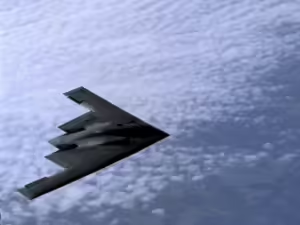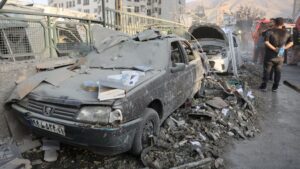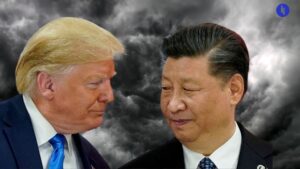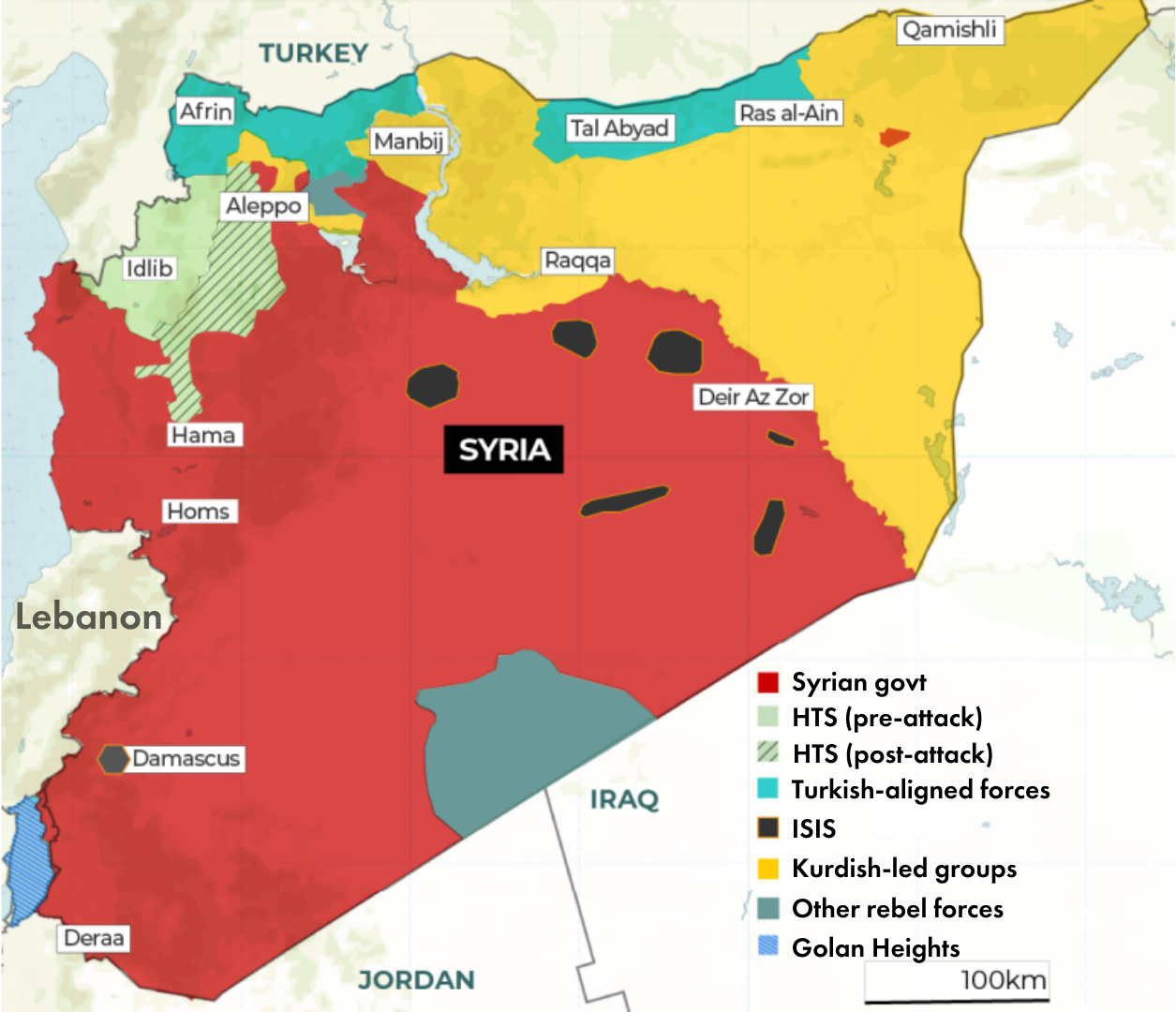We swan-dived into Thanksgiving last week noting that Hezbollah’s retreat could trigger further instability in Lebanon. And hours later, it ended up contributing to a stunning turn of events over the border in Syria. So let’s get you up to speed.
First, some quick history: after the Ottoman Empire and a period of French control then post-independence upheaval, the Assad family emerged in control of Syria from 1971. Fast forward to 2011, and Assad Jr’s brutal response to Syria’s mass Arab Spring protests tipped his country into civil war, leaving half a million dead and prompting millions to flee.
Multiple outside powers soon then (re)emerged to protect their interests and press their influence. At risk of casually summarising a geopolitical labyrinth in a few dot points…
Stay on top of your world from inside your inbox.
Subscribe for free today and receive way much more insights.
Trusted by 134,000+ subscribers
No spam. No noise. Unsubscribe any time.
- Turkey wanted to curb rival Kurdish armed groups and return Syrian refugees
- Russia wanted to protect its naval base at Tartus and expand its footprint
- Iran wanted to protect its supply lines, including for its armed proxies like…
- Hezbollah, which in turn wanted to strengthen its own hand against…
- Israel, which in turn has fought its foes in a shadow war back in Syria.
Anyway, once the civil war kicked off, opposition forces seized much of Syria’s largest city (Aleppo) in 2012, but Assad took it back in 2016 with some brutal help from Russian jets, Hezbollah ground forces, and Iranian logistics. And that’s where the battle lines mostly stabilised, with Assad controlling around 70% of his country ever since.
That was until last week, when opposition forces suddenly broke through Assad’s lines near Aleppo, then somehow captured the entire economic hub within 48 hours and moved on towards Hama (another step closer to the capital, Damascus).
So who’s behind this?
We’ve referred vaguely to ‘opposition forces’ because it’s technically a broad coalition, but the core driver is an Islamist group known as Hayat Tahrir al-Sham (HTS – not to be confused with Korean boyband BTS).
Formerly known as al-Nusra Front, it used to be the Syrian branch of al-Qaeda before it publicly cut ties in 2016. Its leader (Abu Mohammed al-Golani) has since been re-branding HTS in an effort to gain legitimacy among both Syrians and foreign powers, some of whom have seen Assad as the lesser evil: Golani has provided services, worked with aid groups and journalists, met with local Christian and Druze leaders, and issued statements pledging to protect minorities (including Armenians).
Anyway, while Aleppo’s Greek Orthodox community still held regular mass yesterday (Sunday), it’s far too early to know how much of this friendlier face is branding versus reality — HTS forces have been too busy fighting (after stopping for some chicken shawarma), and it remains a listed terrorist group in the US, Russia, Turkey and beyond.
Meanwhile, you can already see some of the cracks in the opposition: some Turkey-backed groups have attacked rival (US-linked) Kurdish groups, rather than Assad’s forces.
So why pull this stunt now?
HTS has spent years regrouping, but there’ve been three immediate triggers: first, Assad had intensified his airstrikes against opposition forces over the past month, so this lightning move was a response to that. Turkish officials are saying they thought it was just going to be a limited counter-attack, so the collapse of Assad’s Aleppo unit was a surprise.
Second, months of Israeli airstrikes had already weakened Assad, culminating in a prescient UN warning just weeks ago of “dangerous and unpredictable consequences“.
But third, Assad’s top backers are all stretched thin: Putin already re-assigned some of his Syrian contingent to maximise gains in Ukraine before Trump 2.0; Hezbollah is now licking its wounds in Lebanon; and that’s left its backer-in-chief Iran looking vulnerable.
So just hours after Hezbollah’s ceasefire with Israel kicked off last week, HTS made its move.
And how has Assad responded?
There were reports he immediately flew to Moscow, and the Kremlin’s comment that it had “nothing to add” leaves us assessing those reports are probably true. Either way, Assad was back in Damascus last night (Sunday) in time to host Iran’s foreign minister.
And his troops now seem to have stabilised after the initial panic, with Russian and Syrian jets now striking opposition positions (plus apparently refugees and a Franciscan convent). Meanwhile, Assad’s foreign backers have again now pledged their support, though there are harder limits to what they can achieve this time around.
INTRIGUE’S TAKE
Who’s the biggest winner here? Clearly Turkey, which has developed functional ties with and influence over HTS and related groups, so it’s now (via this latest HTS move) pushing its reach even deeper into Syrian territory. That strengthens Erdogan’s hand not only with Assad, but with Putin and beyond.
As for the biggest loser? Beyond the obvious (Assad), it’s Putin: he’s been writing geopolitical cheques his country is now struggling to cash, whether that’s propping up regimes in the Sahel or Syria, or pushing his ‘three-day’ conquest of Ukraine, all while bumping up more against the realities of labour shortages, inflation, and sanctions.
So there are some tough choices ahead for Putin, and it’s hard to see Assad being top of his list.
Also worth noting:
- UN Security Council Resolution 2254 from 2015 laid out a roadmap for peace, noting “the Syrian people will decide the future of Syria“. But Assad and his backers went on to kill hundreds of thousands of Syrians to reassert control.
- Biden’s outgoing US national security adviser (Jake Sullivan) has noted concerns about HTS, while observing “we don’t cry over the fact that the Assad government, backed by Russia, Iran and Hezbollah, are facing certain kinds of pressure.”
- Donald Trump initially sought to remove the 900 anti-ISIS US troops from Syria during his first administration, but ended up leaving them; his plans for Trump 2.0 are TBC.








